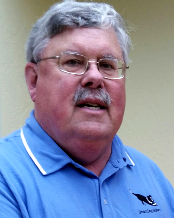
SMART DOG MININGTM
It
takes a smart dog to find hidden treasures
Why Mining Projects Go Bad

There is a lot of talk about the number of
mining projects that have not met their goals by overrunning the
budgets and being behind schedule, also the amount of the overruns
and length of the delays.
There are a lot of reasons projects can go bad;
changing political situations, changing economic conditions
(material costs increase or commodity sales price decrease),
inexperienced project team, poor control of the project, and many
others. Some of these
you have no control over (politics and economics).
But some you do.
While many of the articles point to project
control and project management, I believe there is another culprit.
First off NI 43-101, JORC, and SAMREC are NOT enough!
While these codes (NI 43-101, JORC, and SAMREC)
have done a lot to assure adequate resource and reserve reporting
they were not designed to be a complete description of a project.
Their purpose is to provide for some safeguard against
misleading, wrong, or fake information on mineral properties
resources and reserves as in the Bre-X scandal (http://en.wikipedia.org/wiki/Bre-X)
.
For what they were meant for, they do a
reasonable job, but should not be considered as a complete and final
answer. Part of this is
because they were not designed to cover the actual mining and
processing (where the real costs are).
I am going to use NI 43-101 for my discussion
because it is the one I know the most about.
Ni 43-101 generally uses the term “Technical
Report” or “Preliminary Economic Assessment”, but does reference the
terms pre-feasibility and feasibility but refers to the Canadian
Institute of Mining, Metallurgy and Petroleum (CIM) for their
definition. CIM’s
definition of feasibility includes:
“… study of the selected development option … at the time of
reporting, that extraction is reasonably justified (economically
mineable). …” And that a
pre-feasibility is less well defined.
These lead to a fairly wide interpretation of
what a “Feasibility Study” should include.
NI 43-101 does provide a list of 27 items that a Technical
Report should include and even describes what those should cove.
Of the 27 items called for under NI 43-101, 8
are specifically related to the resource and reserves, and 4 are
related to mining, processing and infrastructure requirements.
The others are introductory,
conclusion, or generally descriptive.
Less than 15% actually covers where the time and money spent
in taking a project to production actually are.
This leads to point that the amount of effort preparing the
input and the estimates and schedules for the project is a minor
part of the effort, yet a major reason mining projects go bad.
To truly asses the viability of a project
detailed estimates are needed.
Using simple or factored estimates can lead to problems
getting the project running.
A rather interesting paper is “The High Costs
of Low Estimates” available from Turner & Townsend.
It highlights some of problems with less than detailed
estimates and also lists five common mistakes in estimating.
1. The omission of undefined scope of work from
the estimate
2. Over optimistic performance is assumed
3. Possible risk is omitted
4. Inexperienced or biased estimator used for
the type of estimate or project
5. Inadequate duration allowed for estimate
development

o
40+
years’ experience in the mining industry with strong mineral
processing experience in Precious metals, copper, industrial
minerals, coal, and phosphate
o
Operational experience in precious metals, coal, and phosphate plus
in petrochemicals.
o
Extensive experience studies and feasibility in the US and
international (United States, Canada, Mexico, Ecuador, Columbia,
Venezuela, Chile, China, India, Indonesia, and Greece).
